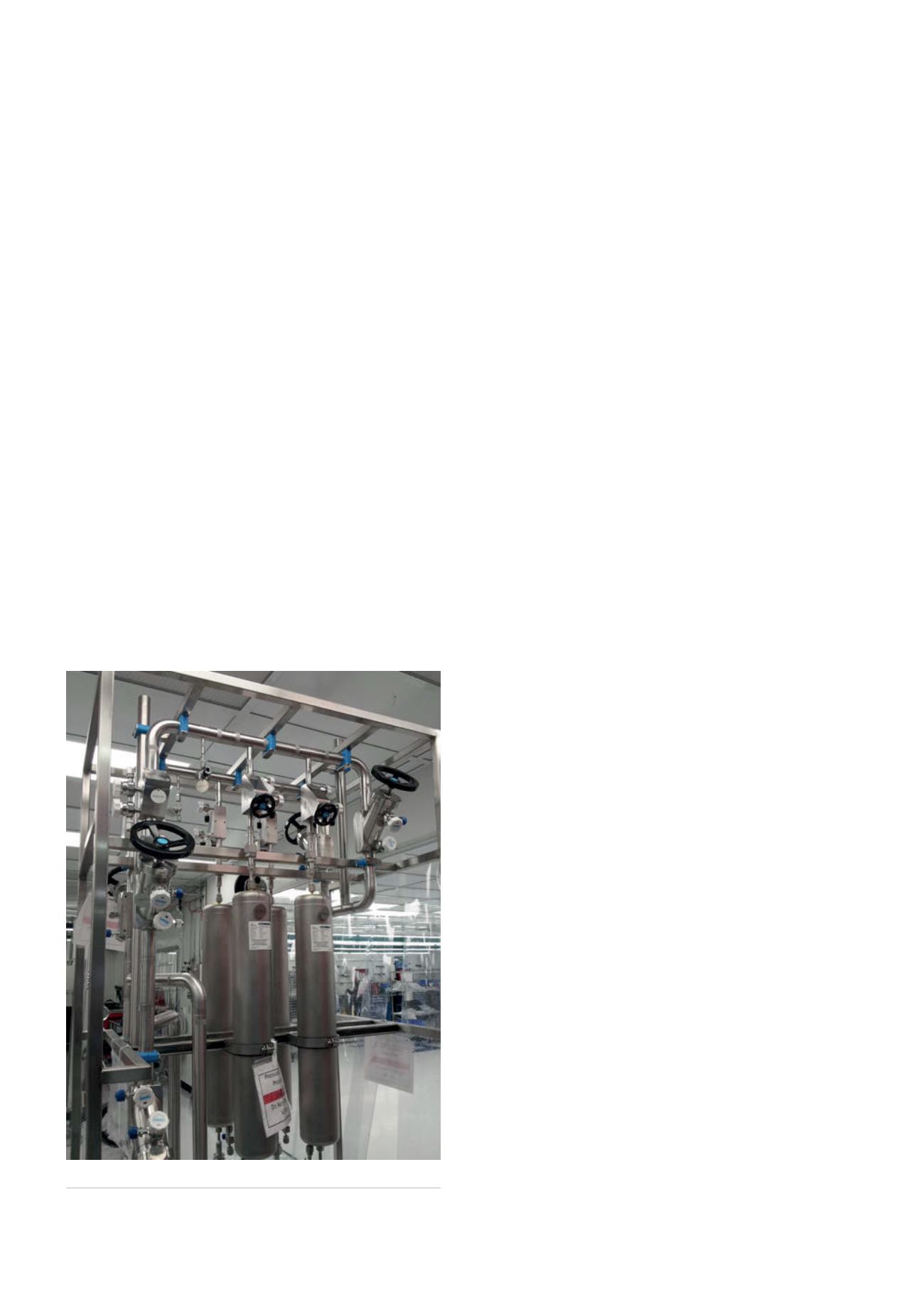
The updated 2014/68/EU PED regulation will take effect in
July 2016. As the first step in moving towards the implementation
of the updated directive, the requirements of the PED were
updated in June this year, the first change to the regulation in
17 years.
What is the PED?
The PED is an EU directive that originally came into force in
1997 (PED 97/23/EC) and applies to the design, manufacture
and assessment and assemblies of pressure equipment, with
a maximum allowable pressure greater than 0.5 bar. The PED
provides guidelines for conformity rather than a strict set of
rules, and sets out the standards for the design, manufacture,
testing, and conformity assessment of pressure equipment in the
European market.
Equipment that complies with the PED is certified with a CE
marking, providing assurance that certified pressure equipment
used in the European Economic Area (EEA) is safe and of sufficient
quality. The requirements of the directive are common to all
states within the EEA, and so all equipment in compliance
with the PED can be sold and used anywhere within the EEA.
This promotes the free movement of goods, and ensures that
compliance is as quick and efficient as possible.
Essentially, the PED requires the level of hazard of pressure
equipment to be assessed and classified into one of five
categories, which cover the entire spectrum of applications.
Equipment deemed to be more hazardous requires more extensive
evaluation of the safety and quality assurance required during the
design, manufacture and testing of the equipment.
The directive applies to any equipment within the scope
defined by the regulation, regardless of application, and also
applies to certain safety equipment designed to protect pressure
equipment from the allowable limits being exceeded. This
includes equipment that is designed to correct or shut down
operations, including pressure and temperature switches, and
pressure limitation devices, such as safety valves.
The PED has a wide range of conformity assessment modules
that define the criteria for design and inspection, as well as the
requirements for documentation. The risk factor of the product
is categorised by either the state of contained fluid, the stored
energy, or the hazards associated with the fluid in the product.
Once this has been determined, the relevant documentation
can be complied and evaluated. For those unfamiliar with
the requirements of these categories, such as companies or
contractors that are new to the sector or entering the European
market for the first time, this can be a confusing and time
consuming process. Knowing where to start and which questions
to ask is key to getting this process right and achieving compliance
efficiently.
Whose responsibility is the PED?
Everyone within the supply chain of pressure equipment has
a responsibility to ensure that only compliant, safe equipment
reaches the marketplace. Whilst some will have a higher level of
responsibility than others, everyone involved in supplying pressure
equipment will have a role to play. Changes to the PED impacts
the whole supply chain, including manufacturers, importers and
distributers of pressure equipment.
One of the key links in this chain are the engineers who
plan, install and maintain pipelines, as the design of pressure
equipment and pressure systems inevitably requires experienced
and knowledgeable experts. As all relevant equipment, plant
and systems within the EEA have to comply with the PED, it is
essential that engineers have at least a basic understanding of the
requirements of the PED and how it applies to their operations,
particularly as it is generally the engineer’s responsibility to
determine the hazard category of each particular equipment item
and system.
What is the process for evaluating pressure
equipment?
Firstly, operators must determine the type of pressure equipment
being considered, e.g. piping, and verify whether or not the
equipment in question is covered under the PED and is not on the
list of exclusions. They must then determine the state of the fluid
within the equipment and evaluate which category it comes under.
For piping, the key factor is to define the diameter, which
is the nominal size of the components comprising the piping
system expressed in millimetres, and evaluate the state, pressure
and temperature of the fluid carried within the piping, in order to
categorise the level of hazard associated with the operation and
ensure compliance with the requirements of the PED.
What do the upcoming changes to the PED
involve?
Essentially, the changes to the directive look to clarify and
streamline the regulations in bringing pressure equipment to the
market, particularly in an industry facing increasing competition
Figure 1.
A chiller skid that is a PED cat.II assembly.
68
World Pipelines
/
MARCH 2016


